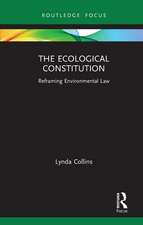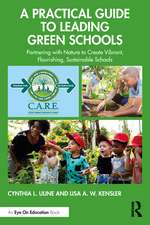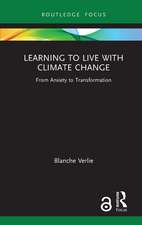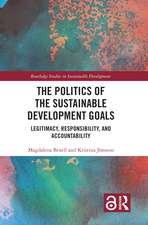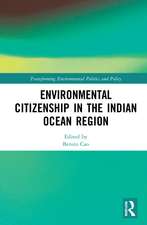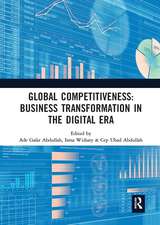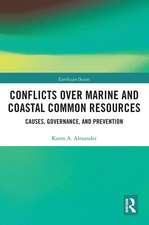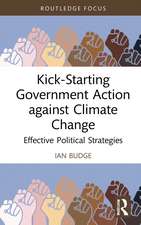Pets as Sentinels, Forecasters and Promoters of Human Health
Editat de M. Ramiro Pastorinho, Ana Catarina A. Sousaen Limba Engleză Paperback – 17 ian 2021
The book offers an integrated approach to the One Health concept, providing, in a truly holistic manner, tools to assess the equilibrium between the environment, menand animals. This exercise will highlight and reshape our position towards the planet that despite being “a microscopic dot on a microscopic dot lost in the unimaginable infinity of the Universe” is still our own. At the end of the day, pets will always be there to help us.
| Toate formatele și edițiile | Preț | Express |
|---|---|---|
| Paperback (1) | 567.56 lei 38-44 zile | |
| Springer International Publishing – 17 ian 2021 | 567.56 lei 38-44 zile | |
| Hardback (1) | 576.85 lei 38-44 zile | |
| Springer International Publishing – 11 dec 2019 | 576.85 lei 38-44 zile |
Preț: 567.56 lei
Preț vechi: 709.44 lei
-20% Nou
Puncte Express: 851
Preț estimativ în valută:
108.60€ • 113.69$ • 89.86£
108.60€ • 113.69$ • 89.86£
Carte tipărită la comandă
Livrare economică 02-08 aprilie
Preluare comenzi: 021 569.72.76
Specificații
ISBN-13: 9783030307363
ISBN-10: 3030307360
Pagini: 375
Ilustrații: XII, 375 p. 43 illus., 18 illus. in color.
Dimensiuni: 155 x 235 mm
Ediția:1st ed. 2020
Editura: Springer International Publishing
Colecția Springer
Locul publicării:Cham, Switzerland
ISBN-10: 3030307360
Pagini: 375
Ilustrații: XII, 375 p. 43 illus., 18 illus. in color.
Dimensiuni: 155 x 235 mm
Ediția:1st ed. 2020
Editura: Springer International Publishing
Colecția Springer
Locul publicării:Cham, Switzerland
Cuprins
Part I: Pets as sentinels of human exposure to environ-mental contaminants.- Chapter1. Pets as sentinels of indoor contamination.- Chapter2. Sled Dogs as Sentinel Species for Monitoring Arctic Ecosystem Health.- Chapter3. Pets as Sentinels of human exposure to pesticides and co-exposure concerns with other contaminants/toxicants.- Chapter4. Role of pet dogs and cats as sentinels of human exposure to polycyclic aromatic hydrocarbons.- Chapter5. Pets as sentinels of human exposure to neurotoxic metals.- Chapter6. Biotransformation of brominated compounds by pet dogs and cats.- Chapter7. Using cats as sentinels for human indoor exposure to organic contaminants and potential effects on the thyroid hormone system.- Part II: Pets as forecasters and promoters of human health Chapter8. Obesity in human and dogs similarities, links and differences.- Chapter9. Canine and feline spontaneous mammary tumors as models of human breast cancer.- Chapter10. Pets and immunomodulation.- Chapter11. Pets as a Novel Microbiome-based Therapy.- Chapter12. Neurological perspectives on pets and the elderly: the truth about cats, dogs and grandparents.- Chapter13. Companion animals and human health: on the need for a comprehensive research agenda towards clinical implementation.- Part III: Psychosocial and psychophysiological effects of human-animal interactions.- Chapter14. Phonetic variation in cat–human communication.- Chapter15. A dog's perspective on animal assisted interventions.
Notă biografică
Dr. M. Ramiro Pastorinho was born in Braga, northern Portugal, in 1970. He graduated in Biology from Coimbra University, Portugal in 1997. After several years teaching at high school, he started research conducive to his Doctorate thesis on the latitudinal calibration of standardized marine bioassays, which created the opportunity of working, besides Aveiro University, at the University of Iceland and the Institute of Aquaculture, University of Stirling, UK. His passion for bioassays granted him a post-Doctoral fellowship which took him to the radically different setting of the Rocky Mountains in Colorado, USA and the Colorado School of Mines where he became a Research Scholar, with periods spent at Ehime University, Japan as an International Invited Researcher. Working in a mining-focused setting steered him towards human health and an invitation to become an Assistant Professor at the Faculty of Health Sciences, University of Beira Interior, Portugal. He is currently an Assistant Professor at the University of Évora, in the (sunny) South of Portugal.
Dr. Ana Catarina Sousa was born in Covilhã, Central Portugal, in 1976. She obtained her PhD in Biology in September 2009 from the University of Aveiro in collaboration with Ehime University in Japan. Upon finishing her PhD, she moved to the USA to work as Research Assistant in the Colorado School of Mines, moving back to Portugal in 2010 to start her first postdoc on Human Exposure Pathways to Endocrine Disrupting Chemicals. Her second postdoc was developed at CICECO, University of Aveiro and focused on the use of ionic liquids in the context of environmental health. Between 2017 and 2018 she was a researcher at Centre National de la Reserche Scientifique – CNRS, in France. Before starting her current position as researcher at CICECO, University of Aveiro she was a lecturer of Environmental Toxicology at Hokkaido University, Japan. Ana Sousa’s main research interests and experience include the evaluation of exposure levels and pathways to environmental contaminants, particularly endocrine disrupting chemicals in wildlife, domestic animals and humans.
Dr. Ana Catarina Sousa was born in Covilhã, Central Portugal, in 1976. She obtained her PhD in Biology in September 2009 from the University of Aveiro in collaboration with Ehime University in Japan. Upon finishing her PhD, she moved to the USA to work as Research Assistant in the Colorado School of Mines, moving back to Portugal in 2010 to start her first postdoc on Human Exposure Pathways to Endocrine Disrupting Chemicals. Her second postdoc was developed at CICECO, University of Aveiro and focused on the use of ionic liquids in the context of environmental health. Between 2017 and 2018 she was a researcher at Centre National de la Reserche Scientifique – CNRS, in France. Before starting her current position as researcher at CICECO, University of Aveiro she was a lecturer of Environmental Toxicology at Hokkaido University, Japan. Ana Sousa’s main research interests and experience include the evaluation of exposure levels and pathways to environmental contaminants, particularly endocrine disrupting chemicals in wildlife, domestic animals and humans.
Textul de pe ultima copertă
This book provides an up-to-date overview of the current knowledge and research concerning domestic pets as sentinels, forecasters and promoters of human health. Written by leading specialists in the fields of medicine, veterinary, environment, analytical chemistry, sociology and behavioral science, this volume provides a comprehensive understanding of the capabilities of pets in what regards to human health. The first seven chapters are devoted to the use of pets as sentinels for their human companions, in terms of exposure to different classes of environmental chemicals. The following five chapters address the use of pets as models for human diseases and promoters of human health. The final two chapters highlight the psycho-social and psychophysiological aspects of human-animal interactions.
The book offers an integrated approach to the One Health concept, providing, in a truly holistic manner, tools to assess the equilibrium between the environment, men and animals. This exercise will highlight and reshape our position towards the planet that despite being “a microscopic dot on a microscopic dot lost in the unimaginable infinity of the Universe” is still our own. At the end of the day, pets will always be there to help us.
The book offers an integrated approach to the One Health concept, providing, in a truly holistic manner, tools to assess the equilibrium between the environment, men and animals. This exercise will highlight and reshape our position towards the planet that despite being “a microscopic dot on a microscopic dot lost in the unimaginable infinity of the Universe” is still our own. At the end of the day, pets will always be there to help us.
Caracteristici
A uniquely comprehensive collection of the latest research in the study of pets and their effects on human health No other recent book on the linkage between the health in humans and their pets Includes state-of-the-art research from leading scientists in the fields of medicine, environment, analytical chemistry, sociology and behavioral science


